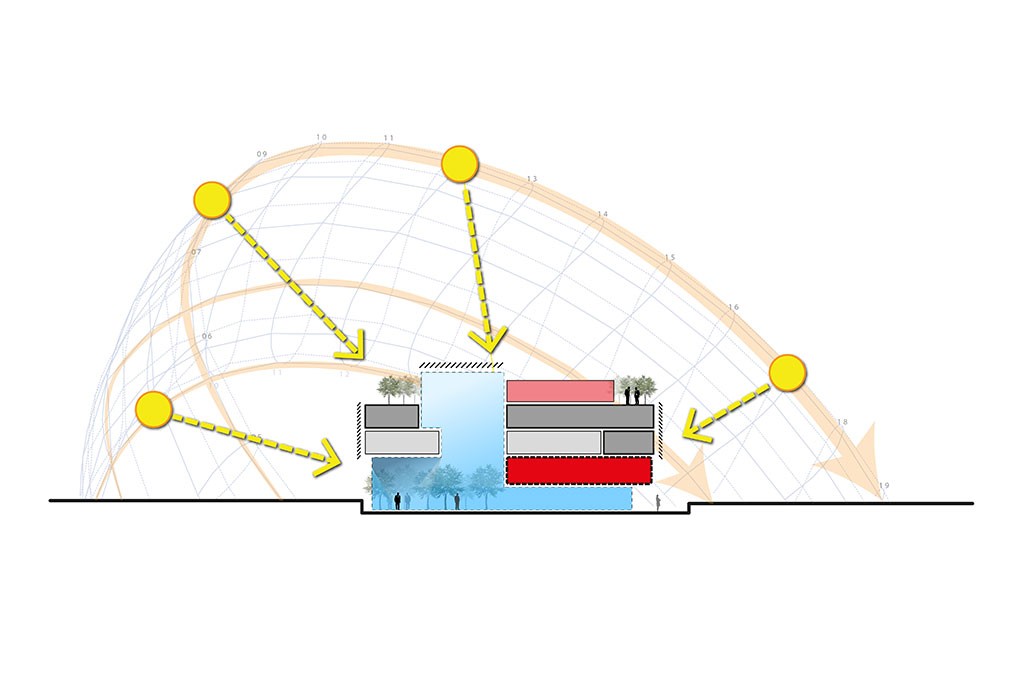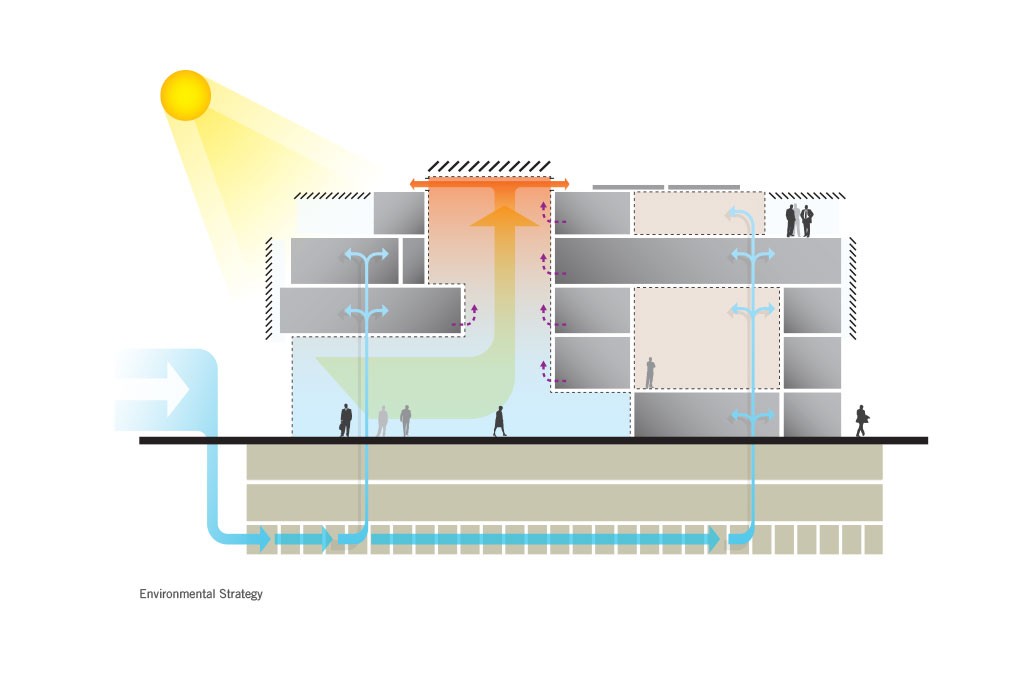Innovation in Architecture – The Concept
The concept of innovation in architecture should not only be defined through the use of high technology.
Avcı Architects, as a leading figure of sustainable innovation architecture in Turkey, defines the dialectical relationship between “architecture” and “innovation” by means of the ingenious use of local materials within the design process as well as the engagement of technology with architecture in proper scales through an accurate contextual analysis.
I believe that rather than being regulated by technology, architects should exploit it so as to promote the basic needs of human being.
According to the architect Selçuk Avcı, the founder of Avcı Architects, the up-to-date term innovation should not merely connote the high-tech solutions that necessarily dominate architecture. For Avcı, the core argument of the concept of innovation in architecture comprises the depiction of architecture as a process of layering, which, in fact, is believed to avoid the orthodox architectural solutions by rather advocating the production of architecture through analysis of its unique context, the use of distinctive material and making use of technological possibilities in relation to the site. As clearly manifested by Selçuk Avcı:
“Design is a process of layering. The emergence of an architectural solution depends on the explicit comprehension of the subjects related to the project and their engagement with the architectural process. In that sense, similar to the fingerprints of a man, every project may be regarded unique. Through this attitude, Avcı Architects intend to explore the DNA of the subject matter by breaking with conventional solutions. In other words, as clarified by Avcı, Avcı Architects believe that as opposed to orthodox and traditional solutions, the production of long-term, authentic and low-cost solutions through the utilization of appropriate technologies should be regarded as an innovative attitude that not only adds value to the architectural scale, but also contributes to social and economic welfare in a larger scale.”
THE EMERGENCE OF THE CONCEPT OF “INNOVATION”
The concept of “innovation” emerges as a seminal notion after the 1950s through the shift of scientific and technological facilities of companies to the global scale. The European Union (EU) and the Organisation for Economic Co-Operation and Development (OECD) define the concept of innovation both as a process and a product. This definition also points to an understanding of the concept that signifies the transformation of an idea into a marketable product or labor, a recent or developed procedure of production or distribution, or a contemporary method of public service. Attributing to the Oslo Manual published by the collaboration of EU and OECD, Selçuk Avcı asserts that “sustainability” and “innovation” turns into a strategic phenomenon. Within this context, Avcı analyzes the innovative performance of Turkey in the fields of architecture and engineering by making use of the information derived from Turkish Statistical Institute (TUIK). According to this data, he states that the percentage of innovative initiatives is %39.8 between 2010-2012, whereas the initiatives that focus on the innovation of a product and/or a process is %21.8. In accordance with this statistics, he highlights the importance of re-evaluating the concepts of “innovativeness”, “creativity” and “novelty” in Turkish framework.
INNOVATION IN ARCHITECTURE
In that regard, Avcı underlines that the concept of innovation is not only the utilization of high-tech products, but also a notion that has to be considered in a holistic attitude in relation to the design principles. For him, the concept of innovation in architecture should be regarded as a component of the organizational scheme of design process that contributes sustainable, social and economic developments in larger contexts. Selçuk Avcı continues to argue that according to the information derived from the Global Innovation Index 2015, which is one of the innovational measurements ranking the world’s counties along with the European Innovation Scoreboard, the innovation performance of Turkey is ranked number 54 in the world with 38.2 points and in relation to this data, Avcı believes that an expansion in Turkey’s innovational capacity and the manufacture of new products, production schemes, service and systems are directly proportional to architectural production.
To maintain a sustainable architecture in Turkey there should be a range of sanctions.
As an Avcı Architects design, the Turkish Contractor’s Association HQ in Ankara, granted with the LEED Platinium Certificate and the International Project of the Year in Building Awards 2014, proves that Avcı Architects play an innovative role to carry green architecture technologies in Turkey one step further with respect to its sustainability standards and the air-conditioning system particularly designed for the building.
Thermal Labyrinth System, which is implemented by Avcı Architects for the first time in Turkey, achieves %50 energy efficiency compared to conventional buildings. Selçuk Avcı, who insists that the concepts of “innovation” and “novelty” are much more susceptible and therefore, sustainable architecture necessitates systematic innovation policies, also draws attention to the importance of long-term, systematized and socio-economic justification of sustainable architecture as well as the significance of sanctions in architectural innovations.
The OECD Report in 1996 defines new technologies, productivity, and especially technological information as economic development in global scale and the main source that improves the living quality. Within this context, the mentioned innovation process points out the transformation of new technologies into effective zones of economic facility. In this regard, the creative innovation process clearly embraces globalization. Selçuk Avcı proclaims that the concept of innovation is scrutinized in social and economic dimensions within the OECD Report and therefore, the development of new methodologies, production systems, economic and novel solutions and finally the process of innovation are not simple, completely autonomous concepts that may be reasoned through technology, but they rather embody strategic and visional foresight


The process of “envisioning”, which is established in 2007 by the collaboration of Avcı Architects and Urbanista as a process of analysis of new investment strategies, plays an innovative role in terms of specifying the investable aspects and potentials of sustainable architecture in Turkey through putting forward a multi-layered investigation process. The process of envisioning comprises distinctive examinations of ecological, economic, ethical phases (3E Principle) of the essential vision specific to the project and the context, which will be presented to the investor prior to architectural process. In relation to the process of envisioning recently developed by Avcı Architects, Selçuk Avcı asserts that architecture is not only about the utilization of new information, high technology or new products and further, innovation in architecture is a process that marketable information could be transformed into products, new systems and services. Avcı continues to argue that:
‘’Investors generally make analysis by using superficial and numerical data, yet they cannot define the coupling vision. Their study does not encompass the context, the relationship of the project with the city and the user or the social potential. For Avcı, besides leaning on numerical facts, one should concurrently put forward an urban planning within the envisioning process. The envisioning process, in that respect, is in fact a strategic process that frames the direction and the potential of the investment as a result of comprehensive quantitative, societal and sociological investigations.’’





